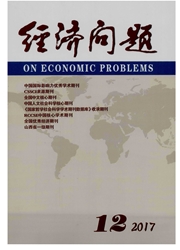

 中文摘要:
中文摘要:
从社会资本对收入差距的直接作用和间接作用出发,分别建立模型,来分析社会资本如何通过两类资源配置的方式对收入产生作用。通过对理论模型的分析发现:从个体角度来说,低收入群体应该注重短期投资与长期投资相结合,避免进入由"低社会资本陷阱"导致的"低收入陷阱"。同时,由于社会资本和人力资本是紧密结合在一起的,自身以及下一代教育的投资从长期看也是可以改变收入差距的重要途径。模型分析了如何通过社会资本投资优化资源配置,加深了社会资本对收入作用机制的理解,尤其是从长期来看社会资本对造成收入差距、收入分层起着重要作用,进而为完善教育政策、建立非正式信贷市场渠道,建立良好市场环境等相关政策的制定提供了参考。
 英文摘要:
英文摘要:
This paper builds two models to explain the direct and indirect effects of social capital on income through capital allocation. The first model is an endogenous growth model with investment decisions. The model shows that there exists a "low social capital"trap,in which agents do not invest in social capital or human capital. Hence government policies aiming at reducing poverty should target investments in both social capital and human capital. The second model enhances a contract theory model with the element of social capital to study the important role of social capital in the credit market. The result again indicates that social capital is a salient non-market force with profound consequences on income distribution.
 同期刊论文项目
同期刊论文项目
 同项目期刊论文
同项目期刊论文
 期刊信息
期刊信息
